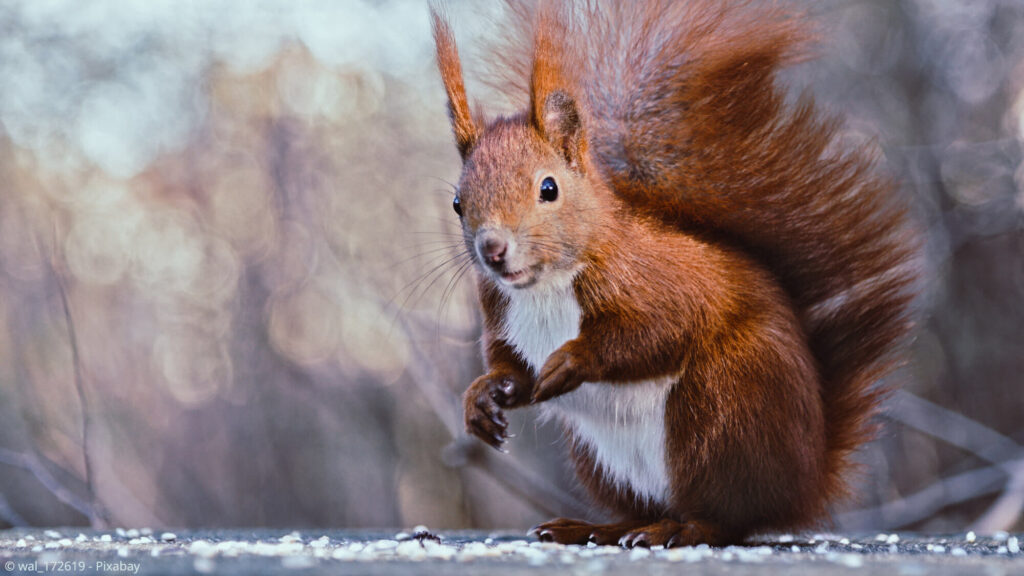Nature’s Feast – Rabbits and Their Fascination with Peppers
In the intricate tapestry of the natural world, the interactions between animals and plants often yield captivating insights into the coexistence of different species. One such intriguing relationship can be observed between rabbits and peppers. These seemingly unrelated entities share a fascinating connection that not only highlights the complexity of the ecosystem but also offers a glimpse into the dietary preferences and behaviors of these creatures. Rabbits, those adorable herbivores that have hopped their way into folklore and gardens alike, exhibit a curious fascination with peppers. The reason behind this attraction lies in the multifaceted nature of peppers, which provide not only nourishment but also sensory stimulation for these small mammals. From the mild and sweet bell peppers to the fiery habaneros, this plant group has evolved to contain a potent compound called capsaicin, responsible for the spicy sensation that humans and animals experience when consuming them. It is this capsaicin that plays a pivotal role in the relationship between rabbits and peppers.
Peppers, a diverse group of flowering plants belonging to the genus Capsicum, come in various shapes, sizes, colors, and levels of spiciness. While some animals are deterred by the spicy kick of capsaicin, rabbits seem to have developed an affinity for the sensation. Studies suggest that rabbits possess fewer capsaicin receptors in their mouths, making them less sensitive to the burning sensation caused by the compound. This reduced sensitivity allows rabbits to consume peppers without being deterred by their spiciness, unlike many other herbivores. Beyond their ability to tolerate capsaicin, rabbits might also be drawn to peppers for their nutritional value. Peppers are rich in essential nutrients like vitamin C, beta-carotene, and dietary fiber. For rabbits, whose diets predominantly consist of vegetation, the varied nutritional content of peppers might provide a welcome addition to their meals. However, the rabbit-pepper connection goes beyond nutrition. Observations have indicated that rabbits engage in peculiar behaviors when interacting with peppers. They might nibble on the pepper plants, chew on the leaves and stems, or even gnaw at the fruits themselves.
 This behavior is not merely about sustenance it might be a form of sensory exploration. The unique flavor and scent of peppers could stimulate the rabbit is senses and provide a form of enrichment in their environment. Furthermore, the presence of capsaicin in peppers can also serve as a defense mechanism for the plants. Many herbivores avoid consuming spicy foods due to the discomfort caused by capsaicin. However, rabbits, with their lowered sensitivity to this compound, could inadvertently play a role in dispersing pepper seeds. As they consume Kaninchen and then roam, the seeds are transported to new locations, aiding in the plant’s reproductive cycle. In essence, the interaction between rabbits and peppers is a testament to the intricate web of life. The rabbits’ tolerance for capsaicin, their attraction to the sensory experience, and the potential benefits for both their diet and the plant’s survival underscore the intricate relationships that exist within ecosystems. It is a reminder that every species, no matter how small or seemingly insignificant, contributes to the larger fabric of life on Earth.
This behavior is not merely about sustenance it might be a form of sensory exploration. The unique flavor and scent of peppers could stimulate the rabbit is senses and provide a form of enrichment in their environment. Furthermore, the presence of capsaicin in peppers can also serve as a defense mechanism for the plants. Many herbivores avoid consuming spicy foods due to the discomfort caused by capsaicin. However, rabbits, with their lowered sensitivity to this compound, could inadvertently play a role in dispersing pepper seeds. As they consume Kaninchen and then roam, the seeds are transported to new locations, aiding in the plant’s reproductive cycle. In essence, the interaction between rabbits and peppers is a testament to the intricate web of life. The rabbits’ tolerance for capsaicin, their attraction to the sensory experience, and the potential benefits for both their diet and the plant’s survival underscore the intricate relationships that exist within ecosystems. It is a reminder that every species, no matter how small or seemingly insignificant, contributes to the larger fabric of life on Earth.
Recent Comments